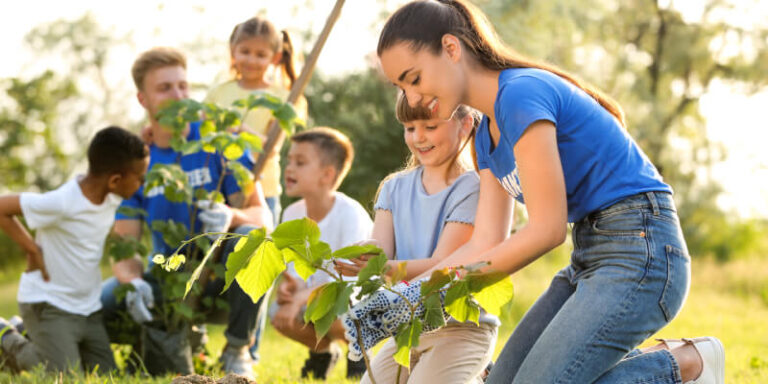Each day, we pass trees, plants and flowers, taking little notice of the world of nature that surrounds us. We have become so accustomed to every footpath, road and building filled with rows of greenery that we rarely take time to appreciate our beautiful planet’s natural wonders.
We start to fail to notice how beneficial these creations are and how well they can help our children and us, so it is essential to understand the importance of planting trees in schools so that we stay happy, healthy and surrounded by our earth’s gorgeous plants and trees!
Our Guide To The Importance Of Planting Trees In Schools
Trees come alongside a number of benefits, not only to the environment but also us, as humans. They are proven to improve overall health and well-being, making it more important than ever to utilise the natural resource to your advantage.
Planting trees is particularly beneficial to areas that focus on education; they can even be used as a handy addition to the curriculum for younger learners. With this in mind, we have devised a guide to the benefits of planting trees in schools.
- Student Tree Planting Initiatives
- Benefits Of Planting Trees In Schools
- Benefits Of Plants In The Classroom
- Planting Activities For Schools
- Can You Get Free Trees For Schools?
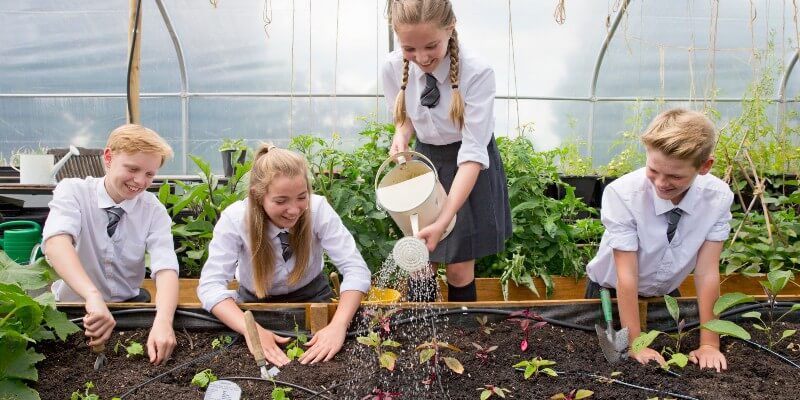
Student Tree Planting Initiatives
Due to the array of fantastic perks that trees bring, it has become super easy to fill your school with any species of your choice – and even better, they are free! Two excellent organisations have set up campaigns to provide schools in the UK with free trees; these are:
- Tree Appeal: Available for all schools and colleges based in the UK or Ireland, the Tree Appeal is focused on “habitat creation, biodiversity targets and social benefits.” The organisation’s corporate sponsors generously pay for the trees provided; all you will need to do is take charge of planting them. To apply, the Tree Appeal asks institutions to describe the project they have in mind, covering a set of simple points.
- Woodland Trust: To coincide with the tree-planting season, the Woodland Trust gives away free trees during the months of March and November. Packs are available for all schools and community groups across the UK and are available in samplings of 30, 105 or 420. Those who teach younger learners will also be provided with activities to inspire pupils in the world of nature and wildlife.
Thanks to the generous organisations mentioned above, planting trees on your school campus couldn’t be any easier. If you are new to planting, there are tonnes of tutorials online, such as those featured on the Trees Are Good website – you could even get pupils involved in the project!
On the other hand, you could enlist a helping hand from professionals who can guarantee the safety of newly planted trees. Many of our clients who opt for commercial landscaping in Milton Keynes also request for trees to be planted once a year, along with maintaining the health of their current plants.

Benefits Of Planting Trees In Schools
Now that we are familiarised with how to apply for free onsite trees, we can delve a little deeper into the benefits:
- Improve Aesthetics
- Provide Shade
- Create Outdoor Learning Space
- Improves Air Quality
- Fantastic Teaching Resource
- Marks The Season
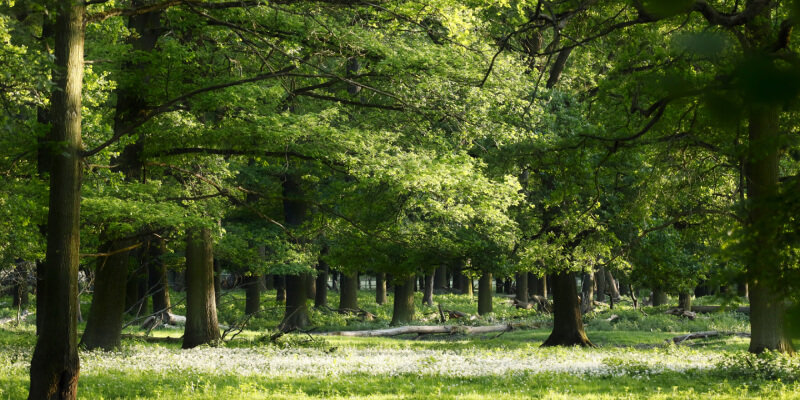
Improve Aesthetics
Trees are a great way to improve the overall aesthetics of your school campus. Picnics, BBQs and summer evening walks all widely take place in public parks, lakes and forests, all for one primary reason – to admire the lush greenery that surrounds us while we relax. The same concept can be achieved by incorporating life into your premises.
Ultimately, educational institutions want to attract new learners each academic year, and this is only possible if parents or carers are drawn towards your school over others in the area. They want to be reassured that their children will receive the highest education level, be safe, and enjoy the time spent learning.
All trees on site must be maintained and cared for throughout the year, as regular check-ups will retain aesthetics and safety. Unpruned trees pose many hazards, such as the risk of students, teachers and visitors tripping on fallen branches. All information regarding tree risk management can be found on the HSE website.
If you want to improve your aesthetics, we highly recommend you contact our team. We have worked with many businesses and schools providing landscape maintenance in Milton Keynes for many years and would be more than happy to help plant and maintain your landscape.
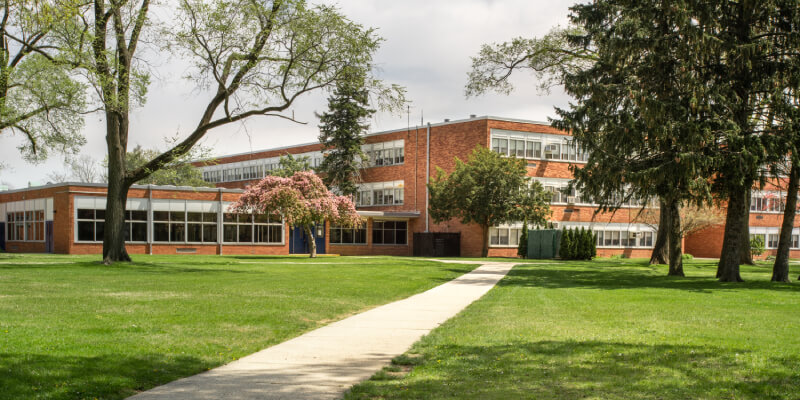
Provide Shade
While we do not reach temperatures as high as overseas, it can still prove tricky to cool down during the warmer months. Trees are in full bloom in the summer, which creates the perfect shaded spot for pupils that prefer a cooler environment away from the sunshine while remaining outdoors.
Many schools strategically plant trees around recreation spaces that are known for being suntraps. It allows the areas to cool down, so pupils can still enjoy the fresh air without the sweltering heat. This is particularly beneficial for primary schools as younger children should try to limit sun exposure as much as possible. The School Run has more great tips on how you can promote sun safety in primary schools.

Create Outdoor Learning Space
While it may seem a little less convenient to take the classroom outside, you would be surprised at the number of benefits outdoor learning can have on children’s development. As a teacher, you will empathise with the struggle of trying to persuade pupils to look away from the window on a warm day and towards the board, so feed their curiosity and take the lesson outside! If you have an area surrounded by trees, this creates the perfect outdoor classroom space. It will enhance their focus when they step back into the classroom, and they will be able to use the sights, sounds and smells around them to boost their concentration and be away from the distraction of the outside world through the window.

Improves Air Quality
Whether we want to plant trees, shrubs or flowers, plants as a whole are renowned for improving the overall air quality. They have proven air-purification properties, which are capable of absorbing harmful gases such as volatile organic compounds (VOCs), along with the traditional carbon dioxide.
Plants clean the air through a process that we are all more than aware of, photosynthesis. Through the leaves, they absorb carbon dioxide and any potentially harmful chemicals and breathe out fresh, pure oxygen. It promotes the circulation of clean, healthy air, which is particularly beneficial for those suffering from conditions such as asthma and nausea. This is why when you’re feeling sick or have a headache, stepping outside for fresh air makes you instantly feel better.
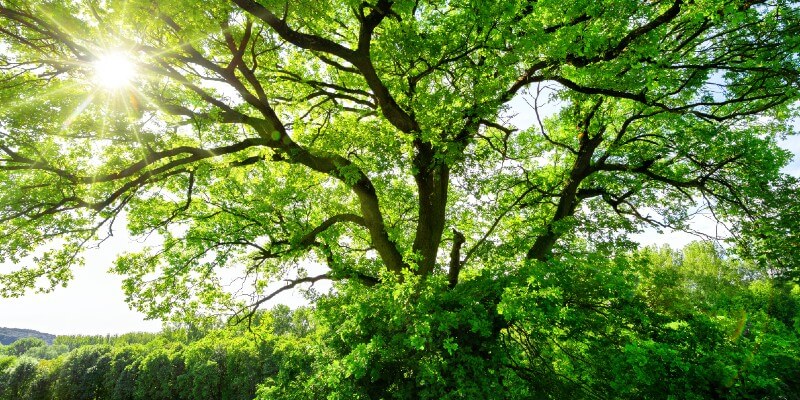
Fantastic Teaching Resource
Not only are trees ideal for creating a natural teaching environment, but they can also be used as a fantastic, free learning resource. Rather than explaining via diagrams, take pupils outdoors and allow them to learn through sensory techniques as real-life, first-hand experiences are increasingly more likely to stick in children’s minds than a set of textbook pages. They will be excited to venture outside for their next nature-based lesson.
If you are in the process of planning a tree-planting project, this provides the perfect opportunity to get pupils involved. Rather than leaving the responsibility to caretakers, consider setting up an environmental club and inviting children to join. Throughout the process, they will be taught a number of personal skills such as teamwork, organisation and communication. They will then have the thrill of watching their creations grow!
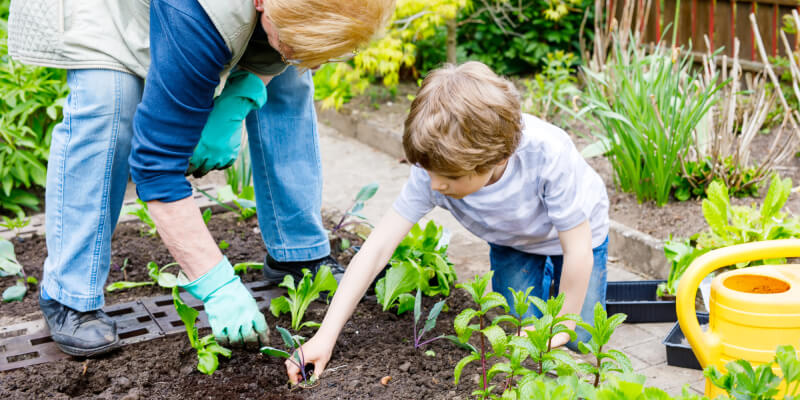
Marks The Season
The change in the appearance of trees marks a new season approaching, an excellent learning resource for smaller children. While older students pass trees without much notice, those in their first few years of primary school study every change that unfolds around them. They use experiences that cause an emotion to learn and develop, even small differences such as the colour change in leaves. Trees can be used to teach pupils about different seasons and how they impact the environment living around them.
ESL Kids Stuff has lots of handy resources and lesson plan ideas for teaching the seasons, including songs, games and literacy tasks.
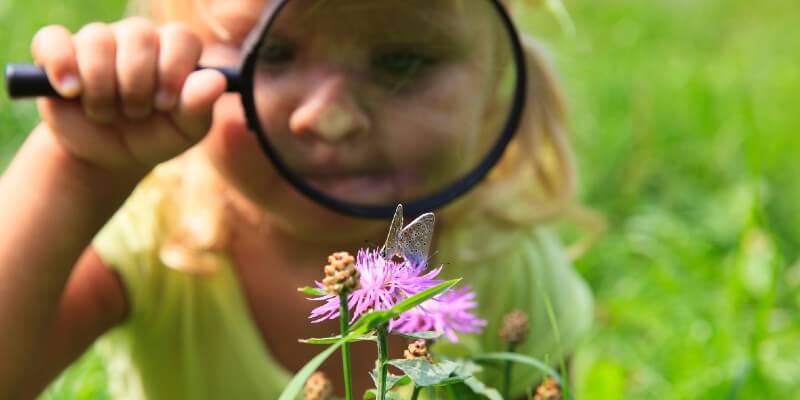
Benefits Of Plants In The Classroom
Additionally to having trees on your school campus, having plants inside the classroom can also provide a host of advantages, including:
Lowers Stress Levels
Adding nature indoors when you have high-stress levels is known to encourage a psychological boost, allowing your mood to be altered positively. It is thought to benefit the body mentally and physically by boosting the immune system, lowering blood pressure and increasing energy levels. In 2022, Childline delivered almost 2,000 counselling sessions about exam stress, a 10% increase since the start of the COVID-19 Pandemic. With this in mind, it is now more important than ever to surround schools and your classrooms with stress-busting techniques – plants are able to contribute towards just that!
Increases Productivity
Increasing the amounts of plants in the classroom can be a great way to increase productivity in your students! As well as reducing stress, they are linked to an improvement in calmness in people, leading to your and your student’s work ethic increasing, and your ability to focus and be creative can increase. This will, ultimately, help improve the kids’ grades, memory and well-being!
Encourage Responsibility
Plants in the classroom help students learn about responsibility as they will need to care for the plant to keep it thriving. Perhaps each student could be designated a few days where the plant is their sole responsibility, giving them newfound independence. We would always recommend avoiding plants that are difficult to care for and, instead, those that require low to medium light, such as:
- Spider Plants
- Golden Pothos
- Peace Lily
- Chinese Evergreen
- Snake Plant
- Heartleaf Philodendron
- Friendship Plant
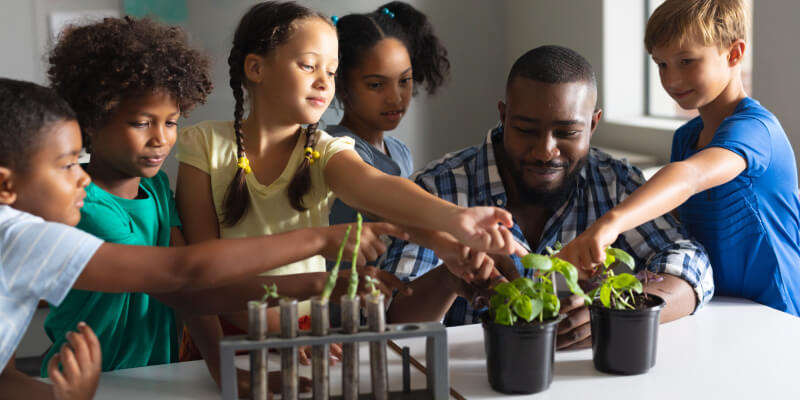
Planting Activities For Schools
There are many excellent ways that you can combine planting with learning, from creative activities to team-building exercises. Just a few examples include:
Plant And Flower Learning
Teach your students about the plants and nature they see in front of them. Create a lesson for them to label the different parts of a flower and, for older children, how plants and trees photosynthesise and the detailed structure of plants.
Make A Fairy Garden
This team-building exercise will allow your students, especially primary school children, to work together to create the best garden for the fairies. Get them to use their imagination, gather materials, and talk with each other; you could even turn it into a competition!
Plantable Seed Ppaer
A brilliant mash-up of art and science classes, this activity allows your children to learn about recycling and how to keep nature full of life and healthy. It is an easy and safe process that your students will enjoy; they can even hand their creations out as gifts or plant them to grow new ones. This step-by-step guide by Alpha Mom tells you exactly how to make these beautiful, environmentally friendly creations!
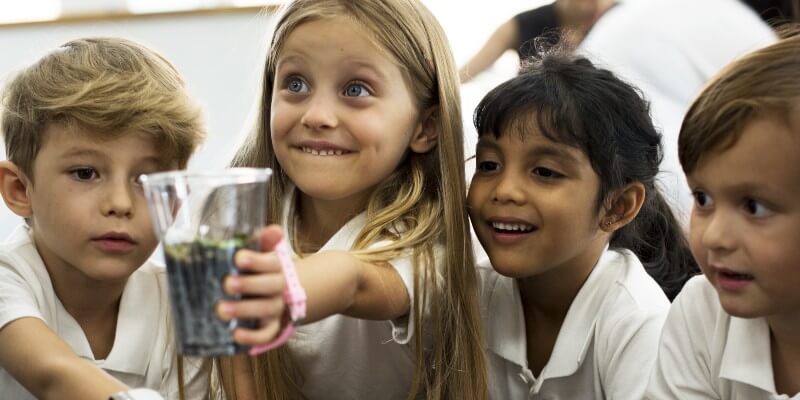
Can You Get Free Trees For Schools?
Many of the UK’s tree-planting initiatives are free to access as they are so beneficial for the community and environment. Both of the schemes mentioned above (The Woodland Trust and Tree Appeal) give away hundreds of thousands of trees to schools and communities for free each year. To apply for your free tree pack, all you’ll need is the six-digit grid reference for the land you wish to plant using OS Maps and permission from the land owner.
The free tree packs provided by the Woodland Trust are as follows:
- Hedge: Great for creating a natural screen or connecting existing woodland to help wildlife stay on the move. Includes 30 trees and requires at least 6-8 metres of land.
- Copse: Create a mini forest with a collection of smaller trees, including silver birch, rowan and wild cherry. Includes 30 trees and requires land the size of a tennis court.
- Wild Harvest: Grow an array of fruits and nuts with this collection of hazel, blackthorn, crab apple, and more. Available in two packs, one including 105 trees and the other including 420. The smaller pack requires land the size of a tennis court, while the larger pack requires land the size of a football pitch.
- Year-Round Colour: Plant a collection of trees that blossom late into the autumn and remain green all year round. The packs include field maple, rowan, silver birch, and wild cherry and require the same amount of land as Wild Harvest.
- Working Wood: This pack features a collection of trees with wood that’s perfect for burning, carving, or weaving. This includes wild cherry, common oak and grey willow. The packs are the same size as Wild Harvest and require the same amount of land.
- Wild Wood: Plant a collection of hardy native trees that can tolerate exposed sites and help dry up wet areas. The packs have 105 or 420 saplings, including downy birch, hawthorn, goat willow, and more. This pack also requires land the size of a tennis court or football pitch.
- Wildlife: Establish food and shelter for wildlife and create a living legacy for future generations with this pack featuring hawthorn, rowan, blackthorn, silver birch, and more. Packs are the same size as Wild Harvest and require the same amount of land.
- Urban Trees: Easy to manage, this pack is designed for residential areas with limited communal space. It features a mixture of 15 trees that thrive in urban environments.
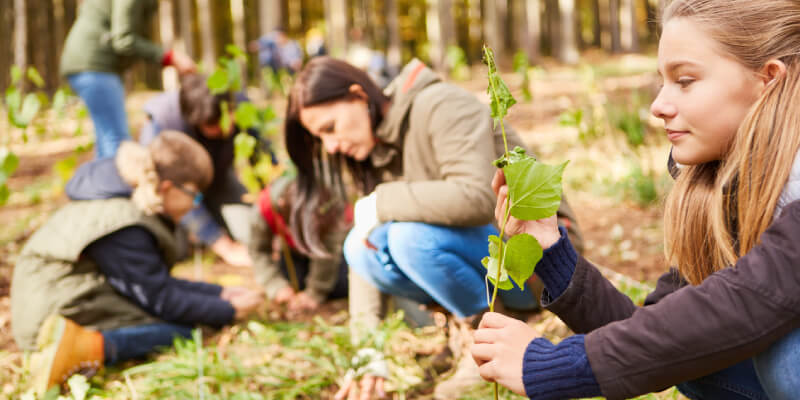
Create A Campus Brimming With Nature!
After browsing through the many benefits of planting trees across the school campus, it would be hard to say no to diving into a tree-planting project. Not only can creating an environment brimming with nature boost concentration, but also students’ overall well-being, allowing them to enjoy the school chapter of their life.
If you are in need of any onsite services to improve the environmental side of your school, then please feel free to contact our experts in grounds maintenance in Milton Keynes!

